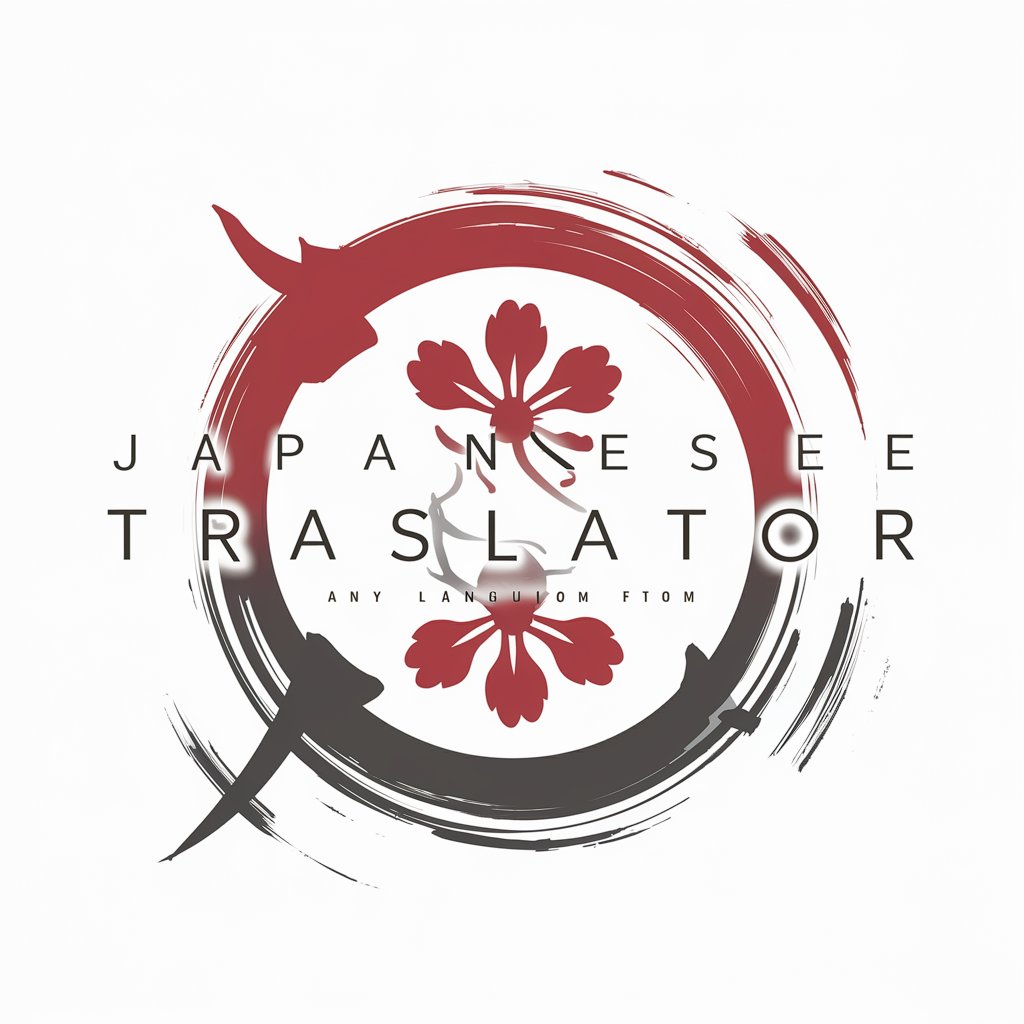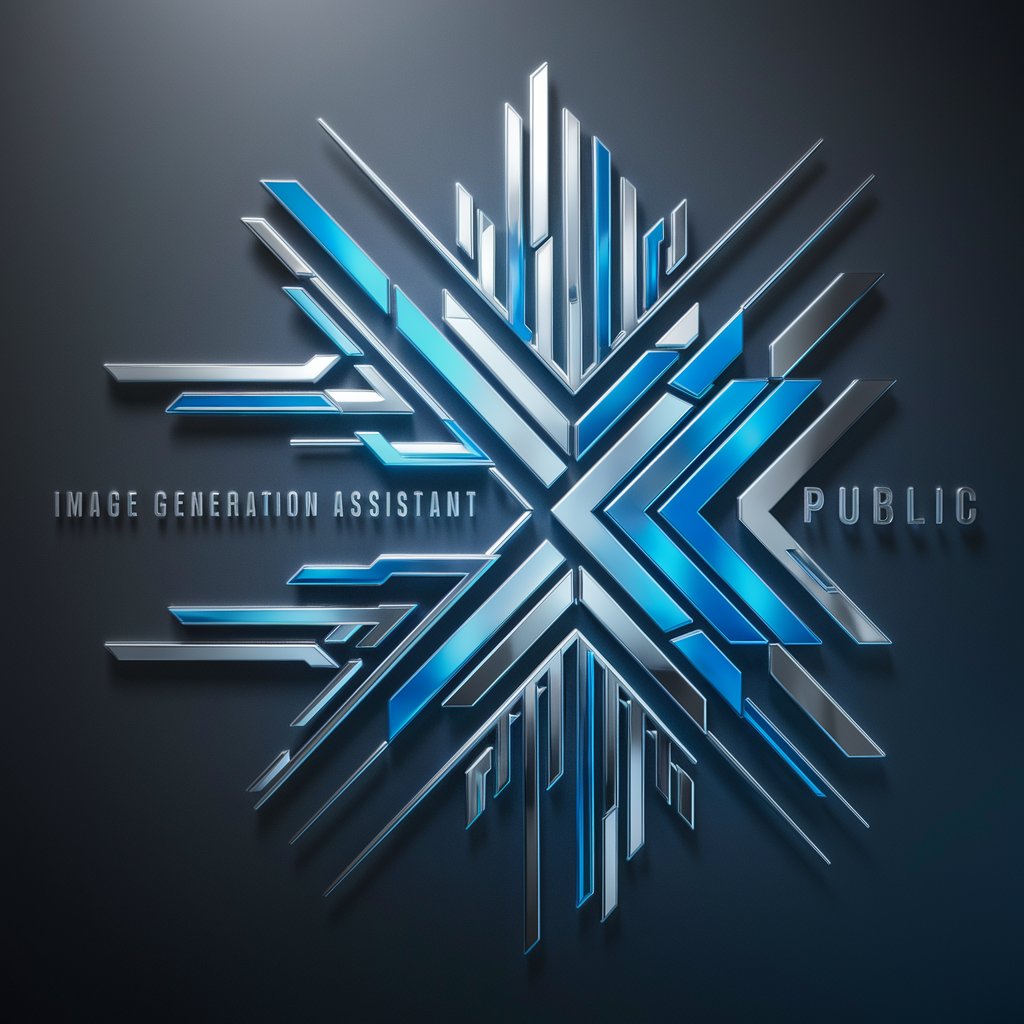Japanese Translator - Text-to-Japanese Translation

Hello! I'm here to help with your Japanese translations.
AI-powered Japanese translation, simplified.
Translate the following English text into Japanese:
How would you say this in Japanese:
Can you provide a Japanese translation for this:
What is the Japanese equivalent of this phrase:
Get Embed Code
Introduction to Japanese Translator
Japanese Translator is a specialized AI tool designed to translate text from any language into Japanese, providing accurate translations along with pronunciation guides. This tool is developed with the aim of facilitating communication across languages by breaking down language barriers. It is equipped to handle translations from English as well as other languages, always with a focus on delivering translations that are not only accurate but also culturally and contextually appropriate. For translations from non-English languages, Japanese Translator first translates the text into Japanese and then offers a pronunciation guide to make the Japanese resemble the original language as closely as possible. This unique approach ensures that users can understand the pronunciation nuances of the translated text, making it easier for them to communicate effectively in Japanese. An example scenario where Japanese Translator proves invaluable is in translating educational materials from English into Japanese for students learning various subjects, providing both the translation and how to pronounce terms correctly. Powered by ChatGPT-4o。

Main Functions of Japanese Translator
Text Translation
Example
Translating a business email from English to Japanese, ensuring that the professional tone is maintained and specific industry terminology is correctly translated.
Scenario
A business professional requires communication with a Japanese client but lacks proficiency in Japanese. Using Japanese Translator, they can convert their English email into Japanese, ensuring clear and culturally appropriate communication.
Pronunciation Guide
Example
Providing the pronunciation for translated Japanese text, such as the name of a person or place, to help a foreign speaker accurately pronounce it in a conversation.
Scenario
A tourist planning to visit Japan wants to learn how to pronounce hotel and station names correctly to navigate more easily. Japanese Translator offers transliteration and pronunciation guides for these names, facilitating smoother travel experiences.
Cultural Appropriateness
Example
Adjusting translations to reflect cultural sensitivities and norms, like modifying greetings or expressions to fit Japanese etiquette.
Scenario
An author wants to translate their book into Japanese, ensuring that cultural references and idioms are adapted appropriately for Japanese readers. Japanese Translator helps adapt the content to be culturally sensitive and relevant.
Ideal Users of Japanese Translator Services
Business Professionals
Individuals working in international trade, negotiations, or partnerships between Japanese and non-Japanese companies. They benefit from being able to communicate clearly and effectively in written Japanese, especially when dealing with contracts, emails, or presentations.
Tourists and Travelers
People planning to visit Japan for leisure or business, seeking to learn basic phrases, understand signs, menus, or instructions, and pronounce names of places correctly. Japanese Translator aids in overcoming language barriers, making travel smoother and more enjoyable.
Students and Educators
Learners and teachers involved in language studies or subjects where materials are often in different languages. Japanese Translator facilitates access to a broader range of educational resources by translating academic texts and providing pronunciation guides for specialized terminology.
Writers and Content Creators
Authors, bloggers, and digital content creators looking to expand their audience by offering their work in Japanese. They benefit from the tool's ability to adapt content to be culturally sensitive while maintaining the original message's integrity.

How to Use Japanese Translator
1
Access a seamless translation experience without the need for login or a premium subscription by visiting yeschat.ai for a complimentary trial.
2
Choose Japanese Translator from the available tools list to start translating text from any language into Japanese.
3
Input the text you wish to translate in the provided text box. Ensure the text is clear and free from errors for optimal translation accuracy.
4
Select the 'Translate' button to process your text. The tool will then display the translated text in Japanese, accompanied by a pronunciation guide.
5
Utilize the translation and pronunciation guide to enhance your understanding and communication in Japanese. For complex phrases or nuanced expressions, consider using the tool’s feedback function to refine your translation.
Try other advanced and practical GPTs
IGA - V6
Bringing Your Imagination to Visual Reality

German Vocab Helper
AI-Powered German Language Mastery

Mermaid Flowchart Generator
Visualizing Ideas with AI-Driven Flowcharts

AI Product Pioneer
Empowering Innovation with AI Insights

Urdu Tutor
Master Urdu with AI-powered insights

Red
Engage with AI, Redefine Conversations

I Spy With My Little Eye
Spot the hidden, power your sight.

HIP HOP MOTIVATOR
Elevate Your Hustle with AI-Driven Hip Hop Wisdom

「 spartan 」
Spartan Answers, AI Simplified

SolidityGPT
Elevate Your Code with AI-Powered Solidity Expertise

Life Timeline Explorer
Visualize Your Life's Journey with AI

TradeGPT the Investment and Trading Assistant
Empowering Investment Decisions with AI

Frequently Asked Questions About Japanese Translator
What languages can Japanese Translator convert into Japanese?
Japanese Translator is capable of translating text from a wide range of languages into Japanese, making it a versatile tool for users worldwide.
Is there a limit to the amount of text I can translate at once?
While Japanese Translator efficiently handles various lengths of text, for best performance and accuracy, it is recommended to translate smaller segments of text, particularly for complex or technical material.
How accurate are the translations provided by Japanese Translator?
Japanese Translator strives for high accuracy by using advanced AI algorithms. However, nuances and context can affect translation precision, so users might occasionally need to adjust translations for perfect accuracy.
Can Japanese Translator help me learn Japanese?
Yes, it is an excellent tool for language learners, providing accurate translations and pronunciation guides to help users understand and practice Japanese.
Does Japanese Translator offer translation for professional or technical documents?
Yes, it can translate a broad range of texts including professional and technical documents. However, for highly specialized documents, additional verification by a native speaker is advisable for accuracy.
